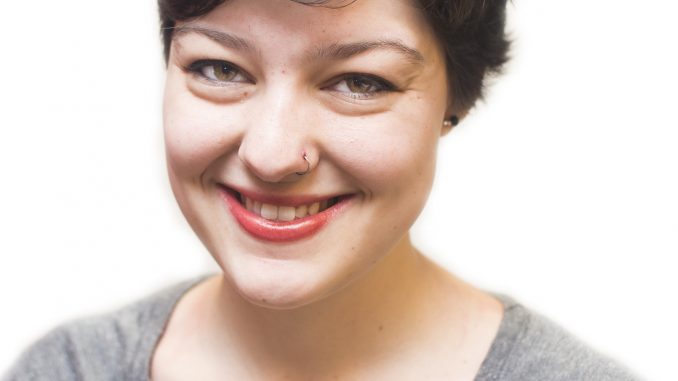
Transportation has always been a problem for me. After my first and only childhood go-kart ride resulted in my body plummeting against a pile of spare tires, I swore it all off.
I’m 21 years old. I’ve never owned a bike, and I don’t have a driver’s license. I’ve coped by buying practical Velcro sandals and walking everywhere, frenetically drawing maps on scrap paper as I go. Now that the weather’s cooling down, I use SEPTA regularly, which I consider a huge accomplishment.
Despite my steadfast aversion to all things wheeled, living in a city makes interaction with drivers and bikers unavoidable – even if your feet never leave the ground. My leisurely four-mile strolls around Philadelphia would not be complete without at least three bikers almost clearing me as they run red lights.
Drivers are no better. Many ignore pedestrians’ right of way as they make turns onto major roads like Broad Street, often illegally, in the case of the intersection at Cecil B. Moore Avenue.
Accidents within and between groups of travelers – be they drivers, pedestrians or bikers – are not uncommon in cities. But it appears the roads around Main Campus are particularly unsafe for all parties. As a result, resentment has been building
“I’ve had to swerve to avoid hitting stupid [bikers],” said Norman Lawrence, a senior music education and performance major who frequently drives throughout Main Campus. Lawrence said he often sees bikers disregard traffic laws by running stop signs and red lights.
An interesting facet of Main Campus’ bike cultures is the presence of Jimmy John’s sandwiches. The company, which prides itself on its “freaky fast” delivery, delivers hoagies via “drivers” who actually travel by bike.
“The company never asked me to bike fast,” said Tyler DiMarco, a senior music education major and a former Jimmy John’s employee. However, DiMarco said he often pushed himself to bike more quickly because it made him feel like a better employee.
“I was always very careful though,” he said. “No running stop signs or blindly crossing streets or anything like that.”
DiMarco said during his brief duration at Jimmy John’s, he had two rough instances with drivers. Once, a driver opened a door without warning as DiMarco biked west on Cecil B. Moore Avenue, resulting in a front flip and several scrapes.
“I was hurting for weeks,” DiMarco said.
While it appears the company doesn’t force its deliverers to drive in a certain way, having bikers around attempting to be “freaky fast” could be a safety liability.
The picture is often painted in one specific way – reckless drivers with bikers as victims. This is probably due to the fact that in a collision between a biker and a driver, regardless of where the culpability lies, the biker will be more physically hurt. While there’s no doubt in my mind that the students who shared their stories with me are being honest, their testimonials alone show me there’s more to this phenomenon.
A major cause for the tension between these groups could be the misunderstanding and lack of communication between students who bike and students who drive. Although Bike Temple offers a variety of programs and services to keep bikers safe, no organizations exist to discuss the importance of safety on the road between bikers and drivers as a unit. Each group thinks the other is the problem, and without communication, this mindset is allowed to persist.
In addition, there are few truly safe options for bikers on Main Campus. The city’s interactive bike map shows that the only bike lanes nearby exist on 12th Street between Cecil B. Moore Avenue and Spring Garden Street, one block of 11th Street between Cecil B. Moore Avenue and Oxford Street and on Cecil B. Moore Avenue between Broad and 10th streets.
No university buildings exist within this meager area, which doesn’t help students who use bikes to get to class. This leaves bikers to choose between cycling on sidewalks, swerving between moving traffic or taking up the same amount of space in the road as a car – the latter being the only legal option, but arguably the most dangerous.
One could argue that a lack of proper bike lanes nearly forces bikers to break the law and bike between cars – although there is no excuse for abandoning other traffic regulations, like stop lights. Having a bike take up space as if it were a car is irresponsible and unsafe, seeing as the average bike can reach speeds not nearly as fast as the average car.
As a self-proclaimed transportation worrywart, I could be overreacting here. But displacing blame from one group to another will not keep pedestrians, bikers or drivers safe. With nearly half the student population commuting, and many more using bikes or cars to travel from homes near Main Campus, action and clarity are in order to avoid ill feelings that result in injuries.
Grace Holleran can be reached at holleran@temple.eduand on twitter @coupsdegrace


Be the first to comment